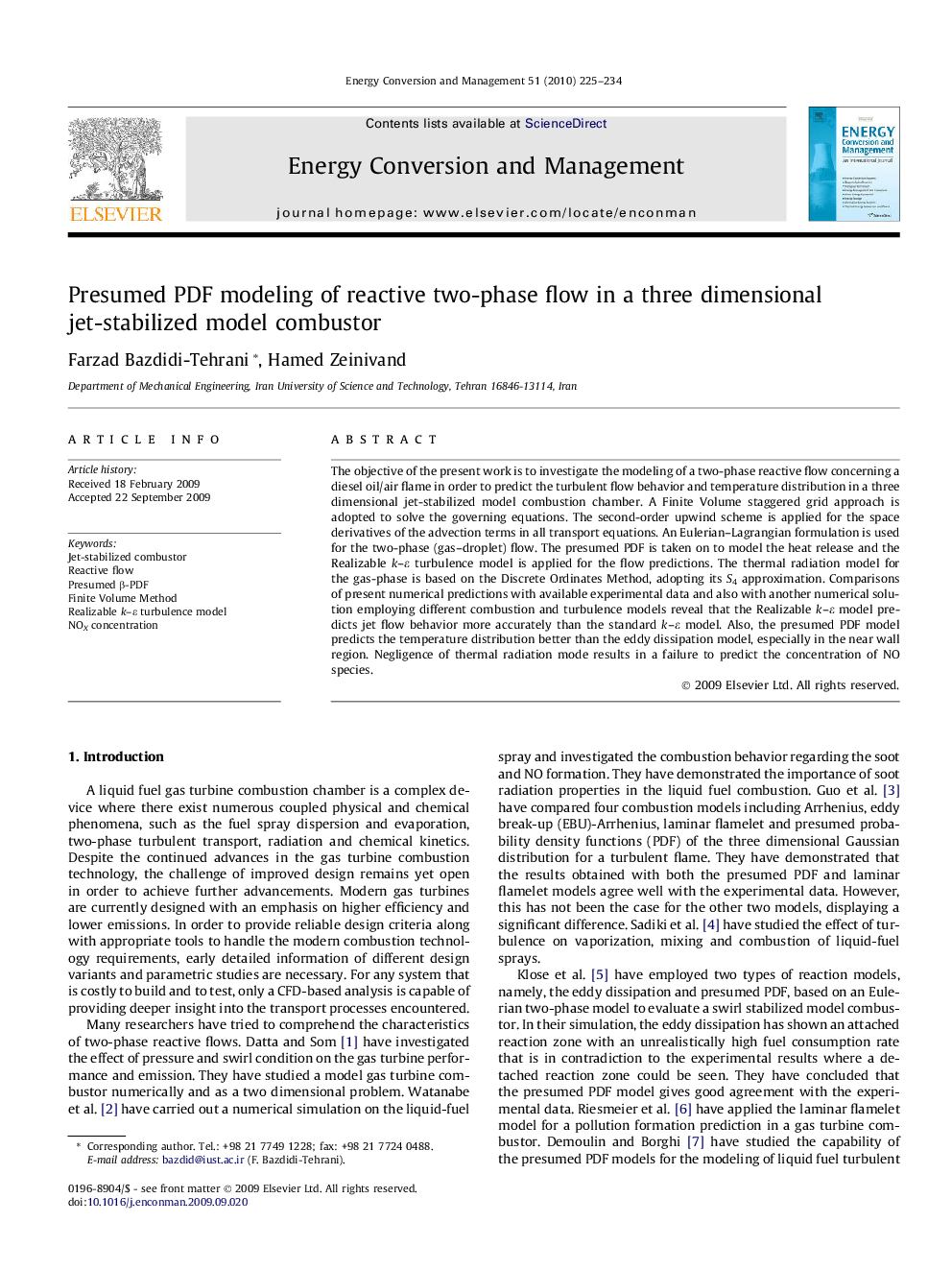| Article ID | Journal | Published Year | Pages | File Type |
|---|---|---|---|---|
| 761605 | Energy Conversion and Management | 2010 | 10 Pages |
The objective of the present work is to investigate the modeling of a two-phase reactive flow concerning a diesel oil/air flame in order to predict the turbulent flow behavior and temperature distribution in a three dimensional jet-stabilized model combustion chamber. A Finite Volume staggered grid approach is adopted to solve the governing equations. The second-order upwind scheme is applied for the space derivatives of the advection terms in all transport equations. An Eulerian–Lagrangian formulation is used for the two-phase (gas–droplet) flow. The presumed PDF is taken on to model the heat release and the Realizable k–ε turbulence model is applied for the flow predictions. The thermal radiation model for the gas-phase is based on the Discrete Ordinates Method, adopting its S4 approximation. Comparisons of present numerical predictions with available experimental data and also with another numerical solution employing different combustion and turbulence models reveal that the Realizable k–ε model predicts jet flow behavior more accurately than the standard k–ε model. Also, the presumed PDF model predicts the temperature distribution better than the eddy dissipation model, especially in the near wall region. Negligence of thermal radiation mode results in a failure to predict the concentration of NO species.
